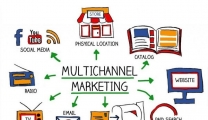We all know the drill.
Sign in at the top of the hour. The organizer welcomes attendees, reads the title, introduces the speakers, and calls for a little “housekeeping” to ensure everything is on point from a tech perspective. Then, after that warmup, you prepare yourself for nearly 60 minutes of text-heavy PowerPoint slides and disembodied voices. Following that, if you’ve managed to stay tuned in, the presentation concludes with a Q&A period and then wraps up, at which point attendees have (hopefully) learned a little something of value they can take back to their team.
So goes the standard webinar, a content format that has become a key pillar of content marketing in the last decade. In fact, webinars drive huge demand and 73% of B2B marketers say they are the best way to generate high-quality leads, according to a massive GoToWebinar research report.
So there’s little question they are a great way to keep the pipeline filled, and in many cases, they go really well. So too, in many cases, they fall flat. The reasons vary. Maybe it’s an otherwise informed speaker who just doesn’t have that je ne sais quoi some charismatic speakers have that keep you glued to the screen. Maybe it’s a spate of slides that are simply overloaded with bullet points and copy and far too few visuals. Maybe it’s the fact the topic could have been well-covered in 15 minutes but the presenters felt bound to draw it out for an hour. Or maybe it’s a product of our digitally distracted and content-saturated age, where attention spans are in high demand and a webinar can sometimes fade into background noise.
Whatever the reason, webinars too often look and sound a little too stodgy and archaic, and it just might be time to dust things off and shake it up a bit. With that, here are seven things you can do to spice up your next webinar presentation.

1. Get visual: I’ve alluded to the text-heavy, bullet-point-saturated slide decks already. They are as present in webinars as they have been for ages in actual, live presentations and conferences. Basic text information has a place and can help the audience take notes and retain information as you speak around the text. However, viewers will in all likelihood receive the slides after the presentation anyway. Also, they ultimately need visual aids and visual cues, diagrams, pictures, and in some cases animations to retain their attention. As you plan the development of your slide deck, ensure there is a healthy balance of visual elements and text for an engaging presentation that will keep eyes and ears locked on the presentation at hand.
2. Go (Oscar) Wilde: Not only was he a great 19th-century Irish poet and playwright: he was also the man everyone gravitated towards when he entered a room. Barack Obama, Martin Luther King Jr., Mahatma Gandhi, Eva Perón — these were all inspiring people that could make any individual feel they were the centre of the world.
I recall working with a presenter in the past on a number of webinars. He was exceptionally well-informed and the takeaways from his presentations were exceptional. However, he read verbatim from notes and his voice beckoned you to sleep.
Your speaker may have webinar material that is solid gold, but without the right delivery, tone, enthusiasm, attitude, and overall charisma, it just won’t go very far. Find the people within and beyond your organization who are not only knowledgeable but also great speakers who are comfortable with speaking.
3. Finesse the slides…obsessively: Yes, we’ve discussed how slides need to be visual, but they also need priority. I’ve seen some presenters cobble together a deck two days before a presentation. Meanwhile, the slides are a large part of what is going to bring a presentation to life. Take extra time to apply extra love and care to your entire slide deck. Test it with internal audiences and seek what works and what doesn’t. Also, if you don’t already, get design involved from conception to conclusion so they can apply their aesthetic sensibilities to the entire product. Sloppy slides imply that you didn’t care enough to take the time to create something great for your audience, all of whom are taking their time to participate in your presentation.
4. Leverage video: The jury may still be out on the benefits and drawbacks of video in webinars, but there is no question — an audience will feel more connected to speakers if they can see their faces throughout the presentation, as they present. In the same GoToWebinar report mentioned above, adding video to spice up presentations was highlighted as a key way to foster increased engagement. You’ll want to watch out for bandwidth and video quality issues, and perhaps even playtest a video-driven presentation with a smaller audience before going global with it, but it is definitely worth experimenting with.
Only 10% of attendees prefer to participate in a 60-minute webinar

5. Keep it brief…or go long: As marketers, we often feel like we have to offer a 60-minute webinar presentation or nothing at all. It’s time to get our heads out of this mentality. I have long been saying webinars should be much shorter. As a matter of fact, a recent ON24 report showed that webinars ought to be between 30 and 45 minutes, and only 10% of attendees involved in the survey preferred to participate in a 60-minute webinar. A combined 81% said either a 30 or 45-minute presentation was ideal. Interestingly, our GoToWebinar survey indicated that a 90-minute webinar attracted 4.6 times as many registrations. So, however you parse that data, try getting out of the 60-minute box with some varied approaches to length.
6. Tag team: You ever notice how sports colour commentary is so rarely executed by one individual alone? Normally there is a back and forth between two and sometimes more individuals. An equipped, knowledgeable, charismatic single speaker can certainly carry a webinar through, but when two or more voices team up on the call, the audience gets a sense of greater authority, more liveliness, greater conversation, and more of a sense of the humans behind it all. Plus, if the presenters are having a bit of fun with back-and-forth banter, all the better.
7. Get right into it: Every time I attend a webinar I wonder why it takes about 10 minutes to dive into the meat of the topic at hand. While a little warmup is necessary and a quick agenda overview always helps, it doesn’t hurt to get right to the heart of the matter. The “housekeeping” and intro business might be useful, but most best-in-class webinar promotions have already handed registrants all that information. They should know what they are getting into, who is speaking, and why they are there. In most cases, launching the presentation should take no more than one to two minutes maximum. This approach aligns particularly well with the 30-minute webinar idea we discussed earlier and could make for some direct, succinct, impressive quick-and-dirty presentations.
So try one, try five, heck, try all seven of the above in your next webinar and shake things up to see how your webinar program results are affected by switching up the established paradigm of webinar development and delivery.












Replies to This Discussion